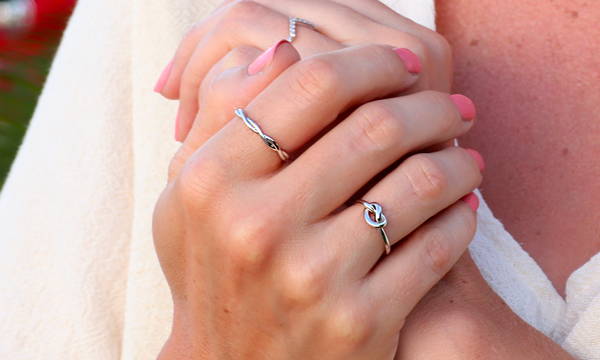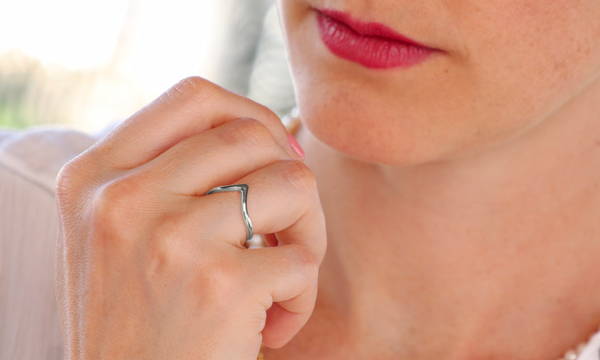
Three 100% natural tips to make your silver jewelry shine
Silver is a metal that has always been associated with elegance, sophistication and timeless beauty. Silver jewelry can be fashioned into multiple shapes and the final creations are often brilliant and captivating, reflecting the skill and artistry of the jeweler.
But while silver jewelry is shiny when purchased, it has a tendency to oxidize over time. The sun, swimming, perspiration and daily manual activities are all causes that can accelerate the oxidation of your silver jewelry. The fact that silver jewelry can become tarnished, blackened, or lose its shine is not necessarily a bad thing. This phenomenon actually adds a dimension of authenticity and uniqueness to silver jewelry.
If you are wondering how to clean silver jewelry effectively and safely, this article is for you. We'll explore various methods, including using silverstone, lemon juice, and a mixture of vinegar and baking soda to ensure effective cleaning of your silver jewelry .
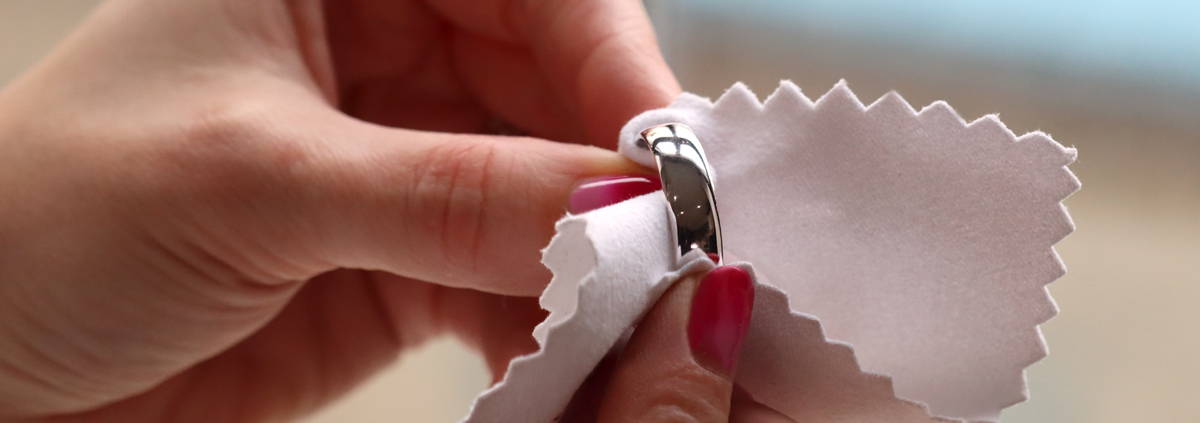
Pure Brite: A natural product to clean your tarnished silver jewelry
It is by far our star product and the best kept secret in the jewelry world. Using silver stone for cleaning silver jewelry is a very popular method due to its effectiveness and eco-friendliness. This natural product is an excellent alternative to chemical products and we suggest this article to learn more about it. But how do you use silver stone to restore shine to tarnished silver jewelry? Here are some detailed instructions and precautions to take for this method of cleaning silver jewelry.
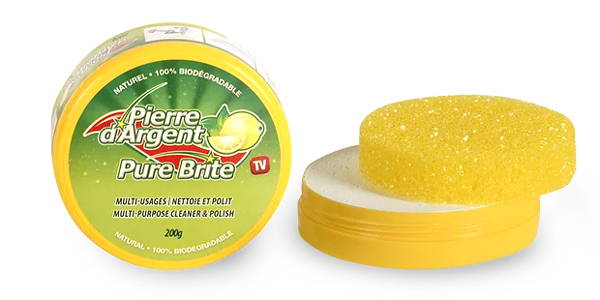
Detailed instructions
- Jewelry Preparation: Before you begin, make sure your jewelry is free of porous stones such as pearls that could be affected by cleaning. Faceted precious stones like diamonds are less risky, but still avoid direct contact with the product.
- Wetting the silverstone: Dip the silverstone in water to soften it.
- Application on jewelry: Gently rub the wet stone on tarnished silver jewelry. For hard-to-reach areas, use a soft-bristled toothbrush.
- Rinsing: Once you have covered all the tarnished areas, rinse the jewelry with lukewarm water.
- Drying: Use a soft cloth to dry the jewelry. Make sure they are completely dry to avoid further oxidation.
Precautions to take
- Test on a small area: Before cleaning the entire piece of jewelry, do a small test on a less visible part to make sure there is no adverse reaction.
- Watch out for precious stones: If your jewelry has stones embedded in it, be extremely careful. Some stones like coral, opal and pearls can be damaged by cleaning.
- Avoid prolonged exposure: Do not leave silver stone in contact with jewelry for a long time. The process must be quick enough to avoid damaging the metal.
Lemon juice: An effective tip for cleaning your oxidized silver jewelry
Here's your grandmother's favorite tip for cleaning your silver jewelry. It is a natural method of cleaning that has gained popularity thanks to its effectiveness and simplicity. This approach is particularly useful for cleaning oxidized silver jewelry and restoring its original luster.
Here is how to proceed step by step, the precautions to take as well as the advantages of this cleaning method for silver jewelry.
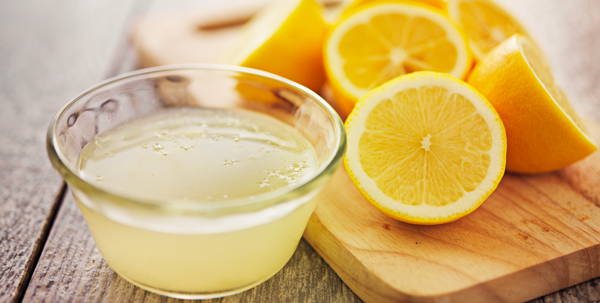
Detailed instructions
- Prepare the mixture: Mix the juice of one fresh lemon with half a cup of warm water in a bowl.
- Soak jewelry: Place your silver jewelry in the mixture and let it soak for 5 to 10 minutes. For heavily oxidized jewelry, you can leave it for up to 20 minutes.
- Brushing: Use a soft-bristled toothbrush to gently brush any tarnished or oxidized areas.
- Rinsing: After brushing, rinse the jewelry with clean water to remove any lemon residue.
- Drying: Dry your jewelry carefully with a soft, lint-free cloth to prevent further oxidation.
Precautions to take
- Stones and Sensitive Materials: If your jewelry has precious stones or other delicate materials, remove them if possible before cleaning or avoid exposing them to the lemon mixture. Again, porous stones such as pearl and coral are more fragile and should avoid contact with lemon juice while precious gems such as diamond, ruby, emerald and sapphire may be in contact without prolonged exposure.
- Duration of exposure: Avoid leaving your silver jewelry in the lemon juice mixture for a long time. Stay vigilant and don't let them sit there all day because the acidity can damage the silver.
- Preliminary Test: Always test the silver jewelry cleaning method on a small, inconspicuous section to check for any adverse reactions before proceeding with full cleaning.
Advantages of this method
- Eco-friendly and natural: Cleaning silver jewelry with lemon uses only one natural ingredient, making it an eco-friendly alternative to chemical cleaners.
- Economical: Lemon juice is cheap and easily available, making it a cost-effective option.
- Effectiveness: This method is particularly effective for cleaning oxidized silver jewelry and for restoring shine to tarnished pieces.
Using these tips for cleaning silver jewelry , lemon juice proves to be both an economical and effective option. However, the use of silver stone remains the first choice of jewelers to restore the beauty of your jewelry.
Vinegar and baking soda: A natural solution for cleaning your blackened silver jewelry
You don't have a silver stone and your lemon supply is exhausted? Carefree. A solution of vinegar and baking soda can be used to effectively clean silver jewelry while restoring its former shine.
Contrary to popular belief, cleaning silver jewelry with white vinegar is not only effective in removing oxidation and tarnish, but it is also safe for the environment. Here are the detailed instructions, precautions to take and why this method is effective.
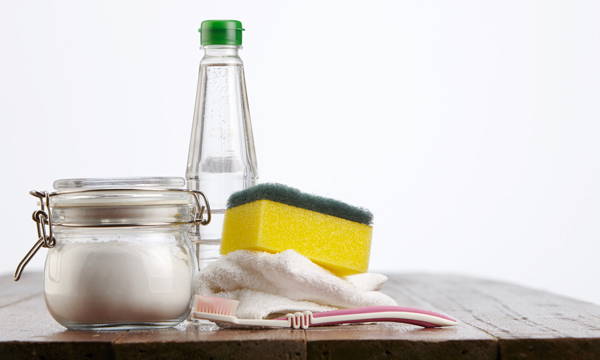
Detailed instructions
- Preparing the solution: In a bowl, mix half a cup of white vinegar with two tablespoons of baking soda.
- Soak Jewelry: Place your silver jewelry in one of these two mixtures and let it soak for 2 to 3 hours.
- Cleaning: Use a soft-bristled toothbrush to gently brush oxidized or tarnished areas.
- Rinsing: Rinse the jewelry with warm water to remove any residue from the solution.
- Drying: Wipe the jewelry with a soft cloth and make sure it is completely dry before storing.
Precautions to take
- Sensitivity Test: Before cleaning the entire item, do a small test on a less visible section to ensure there is no adverse reaction.
- Sensitive stones: If your jewelry has precious or semi-precious stones, be sure to remove them if possible or protect them with plastic wrap during the cleaning process.
- Soak Duration: Avoid leaving jewelry in the solution for an extended period of time which could potentially damage the silver.
Effectiveness of the method
- Tarnish Removal: The vinegar solution works effectively to remove stains and oxidation from silver jewelry.
- Economical: This is an economical option, especially compared to other products for cleaning silver jewelry which can be expensive.
- Safe and eco-friendly: This method is non-toxic and eco-friendly, making it a great choice for those who care about their environmental footprint.
A solution of white vinegar and baking soda therefore proves to be an excellent option for cleaning blackened silver jewelry , offering a method that is both effective and environmentally friendly. As effective as lemon juice, but less effective than silver stone, the vinegar-based mixture can never replace the deep cleaning offered by a jeweler.
The Infinite Love and Tightly Woven rings in sterling silver
The mirror princess ring in sterling silver
A word of caution about popular jewelry cleaners.
- Chemicals can cause stains, discolorations, and even chemical reactions that alter the structure of the metal itself.
- Using chemical cleaners can also damage precious and semi-precious stones by causing color changes, scratches and even cracking.
- Cheap jewelry cleaners can also pose health risks. Contact with skin may cause irritation and allergies.
- Finally, these cleaners are often harmful to the environment. Their production, use and disposal can all contribute to environmental pollution and wasted resources.
While it may be tempting to resort to quick fixes for cleaning silver jewelry , it is crucial to know the risks associated with using cheap jewelry cleaners. Although these products promise to clean silver jewelry easily , their chemical composition can often be more harmful than beneficial. Here are some reasons why it may be best to avoid these popular cleansers.
- Chemicals can cause stains, discolorations, and even chemical reactions that alter the structure of the metal itself.
- Using chemical cleaners can also damage precious and semi-precious stones by causing color changes, scratches and even cracking.
- Cheap jewelry cleaners can also pose health risks. Contact with skin may cause irritation and allergies.
- Finally, these cleaners are often harmful to the environment. Their production, use and disposal can all contribute to environmental pollution and wasted resources.
Rhodium: A long-term solution for the shine of your silver jewelry
If you are tired of cleaning your silver jewelry that keeps oxidizing and losing its shine, rhodium plating is the solution that allows your silver jewelry to stay beautiful for a long time. Here's why rhodium might be the best option for keeping your silver jewelry in pristine condition.
- One of rhodium 's greatest qualities is its exceptional tarnish resistance. Once your silver jewelry is rhodium plated, you no longer have to worry about oxidation making it dull or blackened. However, sometimes more profuse and acidic sweating in certain people accelerates the degradation of rhodium.
- Rhodium is a shiny metal and applying it to clean a silver chain or other silver jewelry increases their shine and makes them look new and sparkling.
- For those who have allergies to certain metals, rhodium is a hypoallergenic option that creates a barrier between your skin and the silver metal.
Rhodium plating is usually done by professional jewelers. The process involves the careful cleaning of silver jewelry before immersing it in a solution of rhodium which is electroplated onto the metal. Although rhodium is a great option for caring for silver jewelry , it is important to note that this precious metal can be expensive. However, considering its long-term benefits, it may be worth the investment.
Entrust the cleaning of your silver jewelry to a jeweler
When it comes to caring for silver jewelry, there is no substitute for the expertise and know-how of a professional jeweler. Although there are various home cleaning methods, these techniques can often be risky if not done correctly. Jewelers have specific training and experience that allows them to know exactly how to handle and clean your silver jewelry. They have access to cleaning tools and machines like ultrasound and polisher that allow for deep cleaning of your jewelry without damaging it.
In conclusion, the cleaning methods proposed in this article can also work to restore shine to your gold jewelry. However, only white gold jewelry can be rhodium plated. Contact one of our jewelers without delay who will be able to answer all your questions and give you the best possible advice for cleaning your silver jewelry.
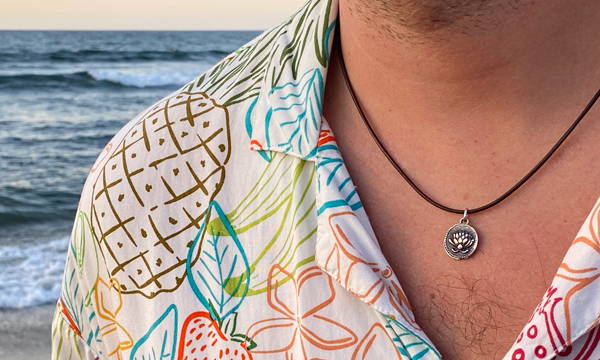
The Buddha Lotus pendant in sterling silver with leather cord
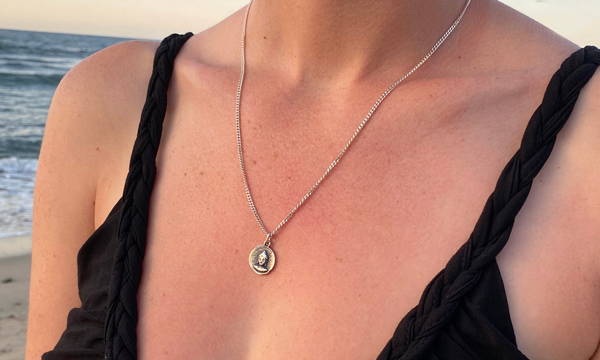
The Aum Bouddah pendant in sterling silver with silver chain
FAQ - Frequently Asked Questions
1. Why is my silver ring blackened and dull?
Silver is a metal that reacts with oxygen and humidity in the air. This chemical reaction leads to the formation of a layer of silver oxide which gives the ring a tarnished or grayish appearance. Chemicals found in perfumes, soaps and lotions can speed up the oxidation process.
2. How do I clean my silver jewelry?
Cleaning silver jewelry can be done in different ways. The most common methods use silverstone, lemon juice or white vinegar. You should scrub with a soft-bristled toothbrush, avoid contact with precious stones, rinse with clean water after application and dry all corners of the jewelry with a clean cloth.
3. What is the best product to clean my silver jewelry.
Chemicals sold in the market for cleaning silver jewelry are usually more harmful than beneficial. The shine is often short-lived and the metal may deteriorate. The use of silver stone remains the first choice of jewelers when it comes to so-called “home” methods. However, cleaning your jewelry in a jewelry store remains the safest solution.
4. What is rhodium plating?
Rhodium is a rare chemical element that is part of the platinum family. Rhodium plating is a process aimed at covering silver or white gold jewelry with a layer of rhodium in order to protect them from corrosion and increase their shine.
Get an online consultation with one of our jewelers today.

